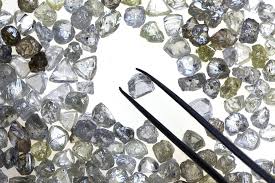
Breaking News
 Quantum Internet Explained: Lasers, Satellites, & Secure Communication | Impact Quantum Podcast
Quantum Internet Explained: Lasers, Satellites, & Secure Communication | Impact Quantum Podcast
 Stanford's secret censorship meeting exposed
Stanford's secret censorship meeting exposed
 Bill Gates Launches $1.4 Billion Soil Bioengineering Initiative...
Bill Gates Launches $1.4 Billion Soil Bioengineering Initiative...
 Did you know that Israel is literally NOT America's ally?
Did you know that Israel is literally NOT America's ally?
Top Tech News
 Goodbye, Cavities? Scientists Just Found a Way to Regrow Tooth Enamel
Goodbye, Cavities? Scientists Just Found a Way to Regrow Tooth Enamel
 Scientists Say They've Figured Out How to Transcribe Your Thoughts From an MRI Scan
Scientists Say They've Figured Out How to Transcribe Your Thoughts From an MRI Scan
 SanDisk stuffed 1 TB of storage into the smallest Type-C thumb drive ever
SanDisk stuffed 1 TB of storage into the smallest Type-C thumb drive ever
 Calling Dr. Grok. Can AI Do Better than Your Primary Physician?
Calling Dr. Grok. Can AI Do Better than Your Primary Physician?
 HUGE 32kWh LiFePO4 DIY Battery w/ 628Ah Cells! 90 Minute Build
HUGE 32kWh LiFePO4 DIY Battery w/ 628Ah Cells! 90 Minute Build
 What Has Bitcoin Become 17 Years After Satoshi Nakamoto Published The Whitepaper?
What Has Bitcoin Become 17 Years After Satoshi Nakamoto Published The Whitepaper?
 Japan just injected artificial blood into a human. No blood type needed. No refrigeration.
Japan just injected artificial blood into a human. No blood type needed. No refrigeration.
 The 6 Best LLM Tools To Run Models Locally
The 6 Best LLM Tools To Run Models Locally
 Testing My First Sodium-Ion Solar Battery
Testing My First Sodium-Ion Solar Battery
 A man once paralyzed from the waist down now stands on his own, not with machines or wires,...
A man once paralyzed from the waist down now stands on his own, not with machines or wires,...
I Proposed With A Diamond Grown In A Lab

I proposed to Popular Science assistant editor Sarah Fecht last year, and I was lucky enough that she said yes! The experience of buying her engagement ring revealed to me just how high-tech jewelry has become in the past decade.
The diamond in her ring is a lab-grown jewel, and virtually identical to its natural counterparts. "Even a trained jeweler cannot tell them apart with the naked eye or jeweler's loupe," says jeweler Ariel Baruch at American Grown Diamonds, the New York company that I bought Sarah's ring from.
The companies that make synthetic diamonds pitch them as an ethical, conflict-free, and frequently cheaper alternative to diamonds produced the old-fashioned way—letting the Earth's mantle provide the pressure and temperature over time, and mining the results. But some jewelry experts have pushed back against these points, arguing ethical diamond mining can boost local economies and that synthetic diamonds are not that much cheaper. Regardless, the production of synthetic diamonds is a major scientific feat that's only become available in the past 60-some years.



